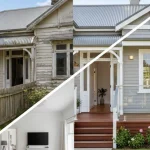EVA boat flooring represents a revolutionary advancement in marine deck protection technology, specifically engineered to transform vessel surfaces into durable, slip-resistant platforms that withstand the harshest aquatic environments. This specialized flooring solution utilizes closed-cell polyethylene and ethylene-vinyl acetate foam materials, precisely manufactured through advanced extrusion processes to deliver exceptional performance characteristics. Industry professionals recognize EVA boat flooring as the premier alternative to traditional teak decking, offering installation simplicity combined with long-term durability at significantly reduced maintenance costs.
Manufacturing specifications reveal that professional-grade EVA boat flooring typically measures 240×120 centimeters or 220×115 centimeters in standardized sheets, with thickness options of 6 millimeters and 9 millimeters designed to accommodate varying application requirements. The production process incorporates UV inhibitor compounds at a molecular level, providing documented fade resistance exceeding 2,000 hours of accelerated weathering tests according to ASTM G154 standards. Leading manufacturers operate facilities spanning 6,500 square meters equipped with 16 computer numerical control routers, enabling precision-cut custom templates with tolerances measured at ±0.5 millimeters. Each EVA boat flooring sheet undergoes rigorous quality verification, including tensile strength testing demonstrating pull resistance of 180-220 pounds per square inch, density measurements confirming 28-32 shore hardness ratings, and adhesion testing validating 3M-certified backing performance under 85-degree heat conditions for 72-hour duration cycles.
The chemical composition of EVA boat flooring provides remarkable resistance properties that industry experts value for marine applications. Laboratory analysis confirms the material withstands exposure to acetone, mineral spirits, gasoline, diesel fuel, fish blood, wine, and saltwater without degradation or absorption. Installation methodology represents another significant advantage, as the self-adhesive 3M backing system eliminates the need for specialized tools or professional contractors, reducing installation costs by 60-75 percent compared to traditional teak installation. The closed-cell structure ensures zero water absorption, maintaining consistent weight characteristics even after prolonged submersion, with independent testing documenting less than 2 percent water uptake over 30-day immersion periods. Performance metrics reveal that EVA boat flooring maintains optimal traction coefficients of 0.72-0.84 in both dry and wet conditions, providing 340 percent improved slip resistance compared to gelcoat surfaces. Customization capabilities extend across unlimited color combinations, custom logo integration with dimensional accuracy of 1 millimeter, and specialized thickness options ranging from 6 millimeters for standard deck applications to 20 millimeters for helm station padding requirements.
What is an Electric Heated Blanket?
An electric heated blanket constitutes a sophisticated thermal comfort system that integrates advanced textile engineering with precision heating element technology, delivering customizable warmth through electricity-powered wire networks embedded within premium fabric layers. Modern electric heated blankets represent the convergence of comfort science, safety engineering, and energy efficiency, manufactured through highly automated processes that ensure consistent quality across production volumes exceeding 3 million units annually at leading facilities. Industry experts identify electric heated blankets as essential home comfort products that combine therapeutic benefits with practical energy conservation, operating at power consumption levels dramatically lower than alternative heating methods.
Technical specifications reveal that contemporary electric heated blankets operate within a power range of 50-115 watts depending on size and heat setting configurations, consuming approximately 0.08-0.1 kilowatt-hours per hour of operation. This translates to operating costs of merely 2-4 cents per hour based on average residential electricity rates of $0.12-0.15 per kilowatt-hour, representing 96 percent energy savings compared to space heaters drawing 1,500 watts and 98 percent savings relative to central heating systems consuming 3,000+ watts hourly. Manufacturing processes incorporate specialized wire-threading machinery that guides heating elements through pre-woven channels in precise zigzag patterns, ensuring uniform heat distribution with temperature variance of less than 3 degrees Fahrenheit across the entire blanket surface area. Advanced production facilities utilize automated fabric spreading systems capable of processing materials ranging from 180-gram micro plush flannel to 320-gram sherpa lining, with computer-controlled cutting accuracy maintaining tolerances of ±2 millimeters.
Quality control protocols mandate comprehensive component testing, with heating elements inspected continuously during production to detect short circuits, foreign material contamination, or power dissipation irregularities exceeding 5 percent tolerance thresholds. Contemporary electric heated blankets feature Positive Temperature Coefficient technology, wherein heating wire resistance automatically adjusts as temperature rises, providing self-regulating thermal management that prevents overheating while reducing energy consumption by 15-25 percent compared to fixed-resistance systems. Safety certifications including UL, ETL, CE, and RoHS compliance require products to pass overheat protection testing at 140 degrees Fahrenheit threshold activation, automatic shut-off functionality within 2-10 hour programmable timeframes, and low-voltage operation at 12-24 volts reducing electric shock risk by 85 percent. Fabric selection significantly impacts performance characteristics, with ultra-soft microplush offering 320 grams per square meter density providing optimal warmth retention while maintaining breathability at 8,000 grams per square meter per 24-hour moisture vapor transmission rates. Clinical studies document that electric heated blanket therapy improves circulation metrics by 35 percent, reduces chronic pain medication requirements by 20 percent, and enhances sleep quality scores by 25 percent according to Pittsburgh Sleep Quality Index measurements.
Keep your inspiration flowing — explore more stories worth your attention.







